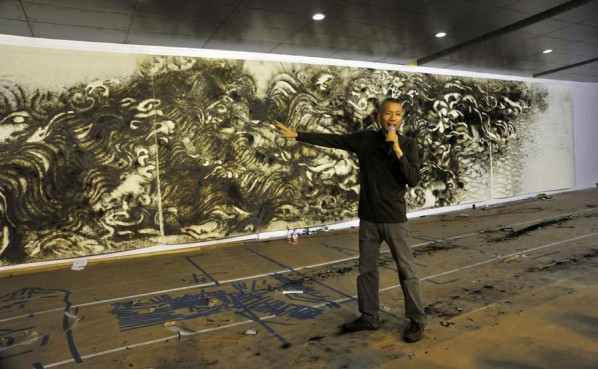
Cai Guo Qiang's Public Gunpowder Drawing Making Tides for His Solo Show- Spring 11; Photo: www.ionly.com.cn
Hangzhou has been the best place for ancient scholars and literati to gather in China. In the next spring, the best season in Hangzhou, Zhejiang Art Museum welcomes the internationally-renowned artist Cai Guo-Qiang for his solo exhibition titled Spring. The exhibition seeks to describe the humanity of Jiang Nan with Cai’s distinctive artistic language. Recently, Cai had finished publicly one of the biggest works in this solo, named Guan Chao Tu/The Tides of Qiantang Jiang River.
This signifies the first time Cai will showcase and discuss his gunpowder drawings in Hangzhou. By exploding gunpowder on paper or silk, Cai explores the unrestrained style of traditional Chinese spirits and the natural disposition of the ancient literati, both of which take a radical departure from the material desire of modern civilized society.
Taking powerful cues from contemporary art and through expressive and often violent techniques, Cai sets out to articulate the lovely scenery and poetic emotions of Jiang Nan. In spring, we meet at the juncture where tradition meets modern, transmitting the eternal spirits and aesthetics.
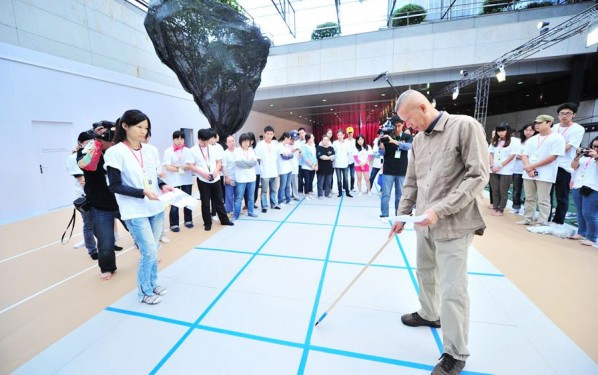
Cai Guo Qiang's Public Gunpowder Drawing Making Tides for His Solo Show- Spring 01; Photo:www.ionly.com.cn
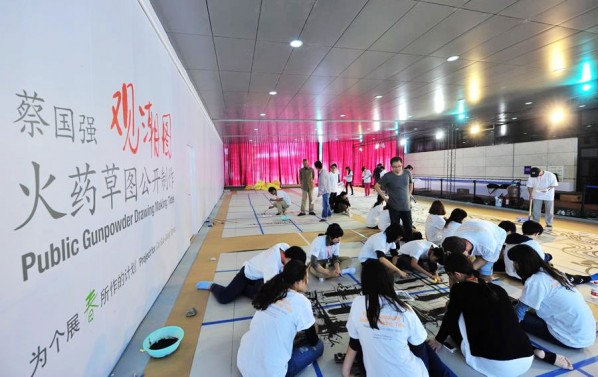
Cai Guo Qiang's Public Gunpowder Drawing Making Tides for His Solo Show- Spring 02; Photo: www.ionly.com.cn
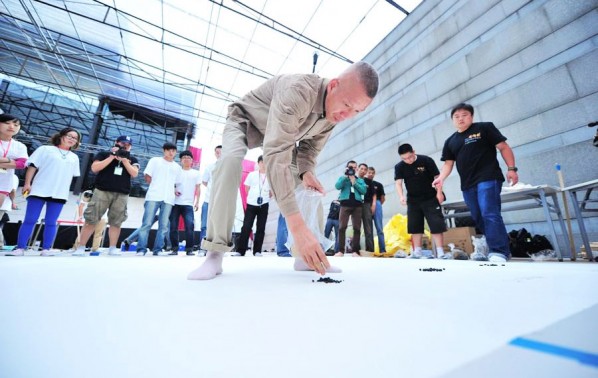
Cai Guo Qiang's Public Gunpowder Drawing Making Tides for His Solo Show- Spring 03; Photo: www.ionly.com.cn
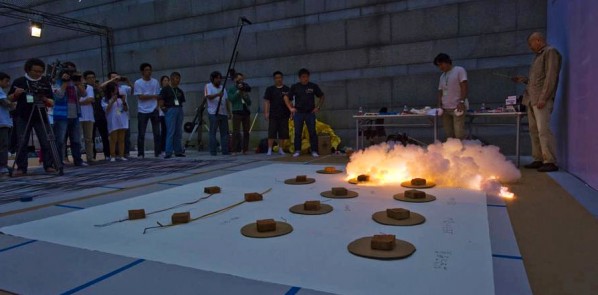
Cai Guo Qiang's Public Gunpowder Drawing Making Tides for His Solo Show- Spring 04; Photo: www.ionly.com.cn
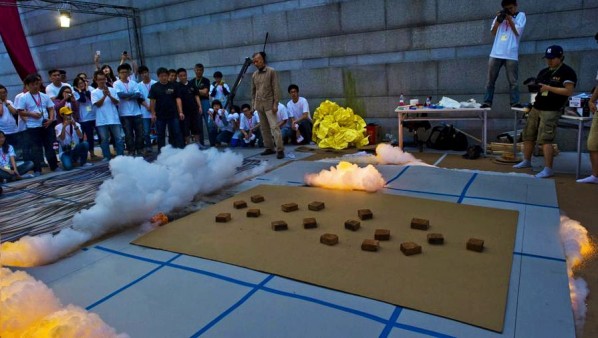
Cai Guo Qiang's Public Gunpowder Drawing Making Tides for His Solo Show- Spring 05; Photo: www.ionly.com.cn
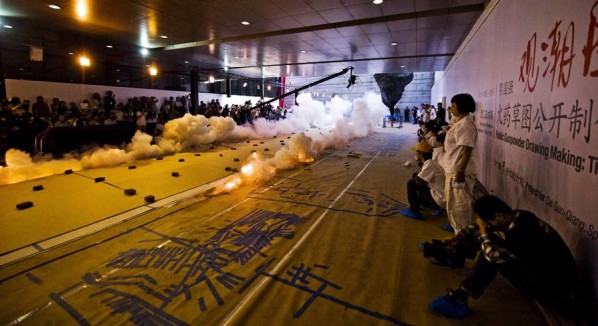
Cai Guo Qiang's Public Gunpowder Drawing Making Tides for His Solo Show- Spring 06; Photo: www.ionly.com.cn
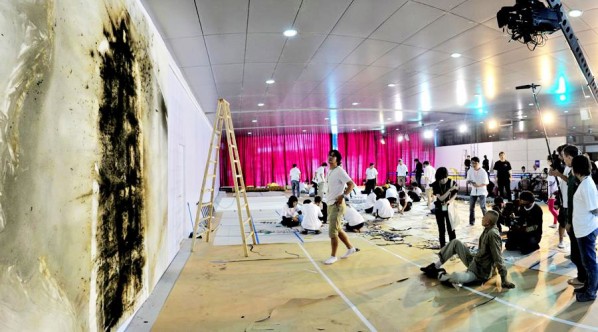
Cai Guo Qiang's Public Gunpowder Drawing Making Tides for His Solo Show- Spring 07; Photo: www.ionly.com.cn
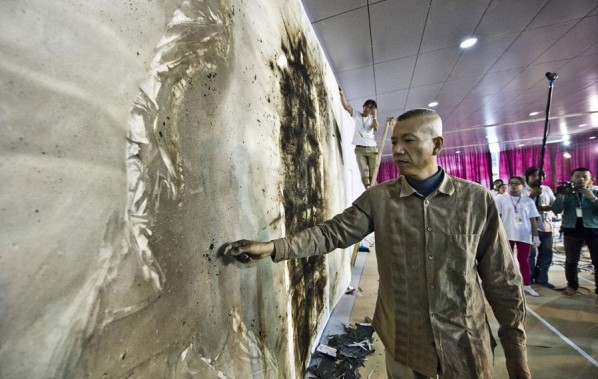
Cai Guo Qiang's Public Gunpowder Drawing Making Tides for His Solo Show- Spring 08; Photo: www.ionly.com.cn
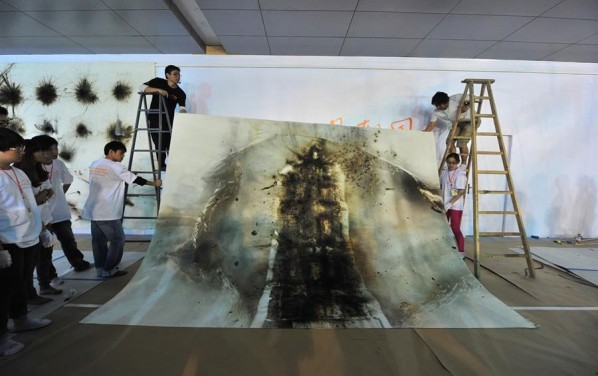
Cai Guo Qiang's Public Gunpowder Drawing Making Tides for His Solo Show- Spring 09; Photo: www.ionly.com.cn
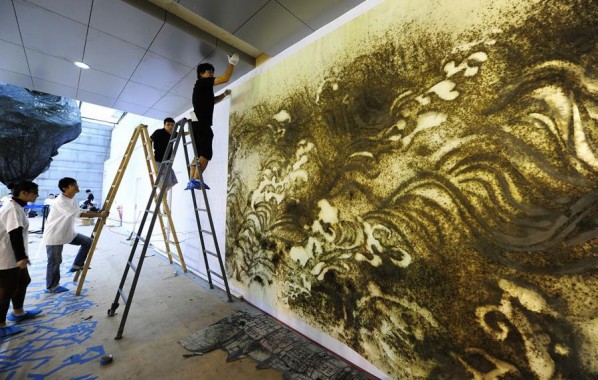
Cai Guo Qiang's Public Gunpowder Drawing Making Tides for His Solo Show- Spring 10; Photo: www.ionly.com.cn
Cai Guo-Qiang was born in 1957 in Quanzhou City, Fujian Province, China. Trained in stage design at the Shanghai Theater Academy, his work has since crossed multiple mediums within art, including drawing, installation, video and performance art. While living in Japan from 1986 to 1995, he explored the properties of gunpowder in his drawings, an inquiry that eventually led to his experimentation with explosives on a massive scale and to the development of his signature explosion events. Drawing upon Eastern philosophy and contemporary social issues as a conceptual basis, these projects and events aim to establish an exchange between viewers and the larger universe around them, utilizing a site-specific approach to culture and history. He currently lives and works in New York.
Cai was awarded the Japan Cultural Design Prize in 1995 and the Golden Lion at the 48th Venice Biennale in 1999. In the following years, he has received the International Association of Art Critics (AICA), New England for Best Installation or Single Work in a Museum (2005), the 7th Hiroshima Art Prize (2007), the 20th Fukuoka Asian Culture Prize (2009), and AICA’s First Place for Best Project in a Public Space for Cai Guo-Qiang: Fallen Blossoms (2010).
Among his many solo exhibitions and projects include Cai Guo-Qiang on the Roof: Transparent Monument, Metropolitan Museum of Art, New York, 2006; Transient Rainbow, Museum of Modern Art, New York, 2002, and APEC Cityscape Fireworks Show, Asia Pacific Economic Cooperation, Shanghai, 2001. He also curated the first China Pavilion at the 51st Venice Biennale, 2005, and held the distinguished position as Director of Visual and Special Effects for the Opening and Closing Ceremonies of the 2008 Summer Olympics in Beijing.
More recently, Cai’s retrospective I Want to Believe opened at the Solomon R. Guggenheim Museum, New York in February 2008 before traveling to the National Art Museum of China in Beijing in August 2008 and then to the Guggenheim Bilbao in March 2009. Last year Cai Guo-Qiang: Peasant Da Vincis, opened in May as the inaugural exhibition of the Rockbund Art Museum in Shanghai. Cai also created Odyssey, a permanent gunpowder drawing installation for the Museum of Fine Arts, Houston in Fall 2010. Installed as part of the museum's ongoing Portal Project, it is one of his largest gunpowder drawings to date. Another solo exhibition, Cai Guo-Qiang – 1040M Underground, is currently on view at the new foundation IZOLYATSIA. Platform for Cultural Initiatives in Donetsk, Ukraine through November 2011.
In December 2011, Cai will have a solo exhibition Cai Guo-Qiang Mirage at the Mathaf: Arab Museum of Modern Art in Doha, Qatar, his first ever in a Middle Eastern country. Cai will also be featured in a solo show at Museum of Contemporary Art, Los Angeles in 2012.




























